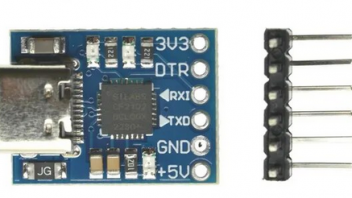Alternative way of interfacing the NETIO GC10 geiger counter
In the past can provided a solution to interface the GC10 geiger counter to a PC by a serial connection.
The problem to overcome was that the GC10 serial interface uses positive 5 Volt signal levels, which does not conform to the official RS232 serial interface voltage levels which uses both positive and negative voltages.
can solved this by using an Arduino processor board in order to convert the 5 volt serial signals to the Arduino serial over USB communication channel, the USB then connected to the logging computer.
While that approach provided a good workable solution, it had some minor drawbacks.
- The standdard Arduino has both a serial over USB connection and also a 5 volt serial interface, but both can not be used at the same time
- To solve the above problem, an additional serial port was created in software by using an available software library.
- Using the software implemented serial port needs programming your Arduino.
Needing to set up a serial communication to the GC10, instead of using an Arduino I decided to use a simple 5 volt serial to usb printed wiring board which was designed for use as an Arduino add on. (Some used this kind of solution also for other types of geiger counters)
This poststamp sized module I used is called the CJMCU CP2102 and is readily available from several sources.

I did not use the supplied pin header, instead I used a 5 wire interface cable, one end having a female connector for connection to the GC10, the other end being lose wires to be soldered to the CJMCU CP2102 board.

The following picture shows the connection wiring

After making the connection between the GC10 and the CJMCU CP2102 board we can then connect the CJMCU CP2102 board to a PC by an USB cable.
Power to the CJMCU CP2102 board and the GC10 is then supplied through the USB cable.
WARNING :
When powering the GC10 in this way, do not use at the same time the alternate +5V or battery supply connection on the GC10
The GC10 documentation states that it can damage your GC10.
After connecting the USB cable to the PC, you can use the assigned virtual serial port on your computer to aquire the data sent by the GC10 or sending commands.
